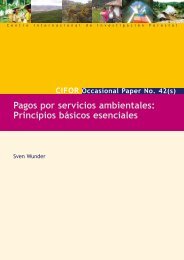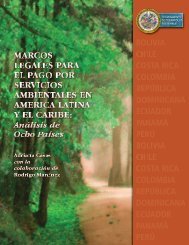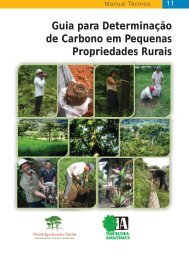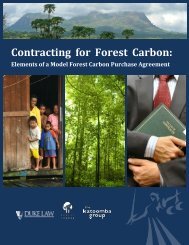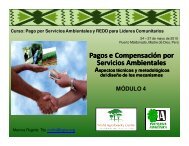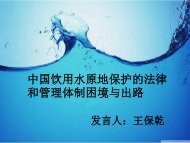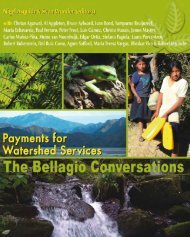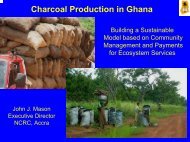Guide on Climate Change and Indigenous Peoples
Guide on Climate Change and Indigenous Peoples
Guide on Climate Change and Indigenous Peoples
- No tags were found...
You also want an ePaper? Increase the reach of your titles
YUMPU automatically turns print PDFs into web optimized ePapers that Google loves.
Some of the impacts are as follows:• Loss of Life. Gender impositi<strong>on</strong>s combined with their alreadymarginalized situati<strong>on</strong>s result to more indigenous women casualties<strong>and</strong> victims during weather disasters <strong>and</strong> emergency situati<strong>on</strong>s. Insome areas in Southeast Asia, women are not forewarned because earlywarnings are placed in public places where women rarely go. Girls <strong>and</strong>women, in some indigenous communities, are not taught to swim <strong>and</strong>are prohibited from going out oftheir homes unaccompanied bymale relatives. These lessen theirchances for survival during theoccurrence of disasters. Womenalso risk their lives because of theirtendency to stay behind to rescuetheir children <strong>and</strong> the elderly. 1• Loss of livelihood <strong>and</strong> foodinsecurity. The n<strong>on</strong> recogniti<strong>on</strong> of rightto ownership, access <strong>and</strong> useby indigenous peoples of theirl<strong>and</strong>s, territories <strong>and</strong> resourcesimplies the loss of women’straditi<strong>on</strong>al livelihoods.“In Aceh (Ind<strong>on</strong>esia), collectingshellfish in the mangroveforests is part of the indigenouswomen’s daily routine. In Maluku,women work to productive tidalarea where they also collectshellfish...”Source: Anggraini, Devi. “<strong>Indigenous</strong>Women’s Workshop at AMAN C<strong>on</strong>gress“ in Down to Earth No. 74, August 2007.http://dte.gn.apc.org/74din.htm accessed4 April 2004.Disrupted rainfall or drought find indigenous women without waterto irrigate their rice fields <strong>and</strong> other traditi<strong>on</strong>al farms resulting to aJosefina Lagus, from the remote village of Benguet in Northern Philippines,42 yrs old <strong>and</strong> mother of five, notes that when the rainy <strong>and</strong> dry seas<strong>on</strong>sbehave erratically, these affect their crop producti<strong>on</strong>.“Our situati<strong>on</strong> has g<strong>on</strong>e from bad to worse. I can’t underst<strong>and</strong> why.Sometimes our fields are flooded <strong>and</strong> sometimes we experience drought,”Josefina told me during an interview.Josefina adds that in their community, a typical day begins at the break ofdawn with women <strong>and</strong> sometimes children walking a c<strong>on</strong>siderable distanceto fetch water using small buckets. They must walk even l<strong>on</strong>ger distances tocollect firewood.“Most women here are silently bearing the brunt of changing climatec<strong>on</strong>diti<strong>on</strong>s. But we pray that these problems will be addressed by ourgovernment <strong>and</strong> other agencies c<strong>on</strong>cerned for the sake of our children,”Josefina said.Source: Imelda V. Abaño, “Women Bear the Brunt of <strong>Climate</strong> Crisis: Their Stories From the UNC<strong>on</strong>ference in Bali,” The Women’s Internati<strong>on</strong>al Perspective, Friday 04 January 2008, , accessed <strong>on</strong> April 4, 2008.110 <str<strong>on</strong>g>Guide</str<strong>on</strong>g> <strong>on</strong> <strong>Climate</strong> <strong>Change</strong> <strong>and</strong> <strong>Indigenous</strong> <strong>Peoples</strong>



